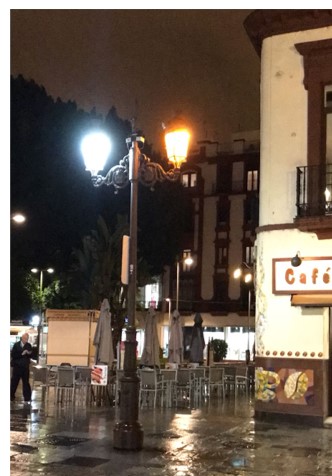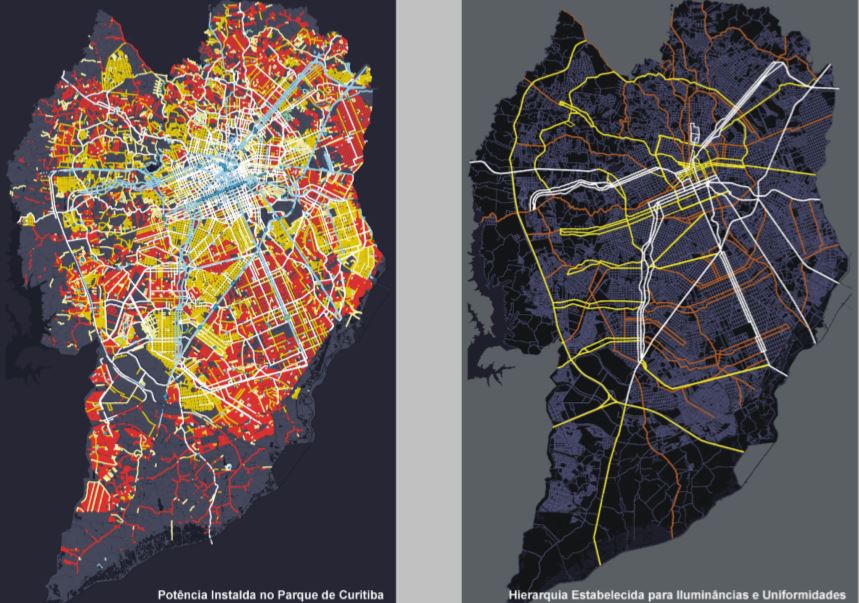María del Mar García Merino
The human being is closely linked to light. Its activity has been regulated and associated, from its beginnings, by the cycles of day and night and, therefore, with sleep and wakefulness. Therefore, thanks to the artificial light from the invention of electricity, there were great technological advances and an increase in productivity to increase hours of work leading to the progress and development of man.
Street lighting has well-defined purposes:
- Provides adequate safety on traffic lanes
- Provides citizen security by reducing night-time crime
- It allows roads and other urban spaces to have a pleasant appearance, favouring commercial, social and cultural activity.
- It favours tourism with adequate monumental lighting
The fundamental role of urban lighting in the image, the environment and the economy of a city is indisputable. And despite this, our cities are far from having a good lighting due largely to the ignorance that a sustainable and quality lighting can have great benefits for the municipality not only economically but also an improvement in environmental quality and in the comfort of the citizen. Therefore, it is essential to plan the actions and good technical advice to achieve this goal.

Figure 1: Luminaire in Metropol Parasol in Seville
Therefore, the natural evolution of this line of thought is the realization of some urban lighting master plans that advocate the sustainable and efficient functioning of the light of our cities.
A lighting master plan is a set of actions, standards and technical recommendations to follow that are established, once known the existing situation in a population, in order to guide the design, management and maintenance of public lighting according to the technologies existing and recommended.
The purpose of public lighting is to provide visibility conditions suitable for the movement of vehicles and pedestrians and the delight of the environment for all those who immerse themselves in it.
Good public lighting affirms the safety of people and heritage by reducing infractions on public roads. It also favours the decrease of accidents on the road, and enhances the urban setting, giving personality to the environment, allowing the identification of places by their illumination.
In this context, an opportunity for urban development is created in terms of urbanism, modernity, sustainability and technology. Opportunity to create a coherent image of the city that helps the city to create an attractive and new environment for the citizen who visits or exploits it. Taking advantage of this moment to reduce energy consumption and reduce the costs of urban lighting thanks to the use of new technologies and superior designs.
More and more cities are becoming aware of the advantages of implementing a master plan for urban lighting in their public lighting systems, not only for the energy savings that this entails but also for the technological advance and the protection of the environment that carries.
Some of these cities are reference in terms of urbanism is referred to as Curitiba (Brazil) or Barcelona (Spain) and others who, betting on this planning initiative have taken advantage of its advantages, such as Sunshine Coast (Australia) or Antequera (Spain).
There are several branches of study in terms of plans, while Antequera and Curitiba opt for a rational plan with marked guidelines, the other two are committed to collaborative plans in which recommendations are given.

Figure 2: Comparison of before and after in Curitiba
After a comparative study of the four master plans and see their actual results, it can be concluded that among the main advantages of the implementation of an urban lighting master plan is:
- Appropriate lighting and in keeping with the image of the city
- Energy and economic efficiency in systems and installations with savings of almost 50% of the bill in some municipalities
- Guidelines for sizing through a hierarchy of action depending on the investment that is available and the main elements of the city
- Guidelines for management and maintenance that help in the continuity of savings.
- Decrease in the generation of carbon dioxide and the consequent greenhouse effect
- Less production of waste such as lamps, which have a longer life.
- Diminution of light pollution. The most efficient solution is the proper orientation of the lamp.
- Lesser effects on the urban flora and fauna. The solution is radical, but sometimes necessary. It consists of the total shutdown in certain necessary periods.
- Systems prepared for the future development of technology such as Smart City
- Real and updated knowledge of the situation of the lighting system
- Value some areas of the city enhancing its tourist and commercial value
In addition, the final goal of the plan would be the financing of future actions thanks to the savings collected in the regulation of the new lighting implemented in the municipality. The specific objectives, as well as the programming of the different phases of application of the plan, should be defined in conjunction with the municipal work team.
